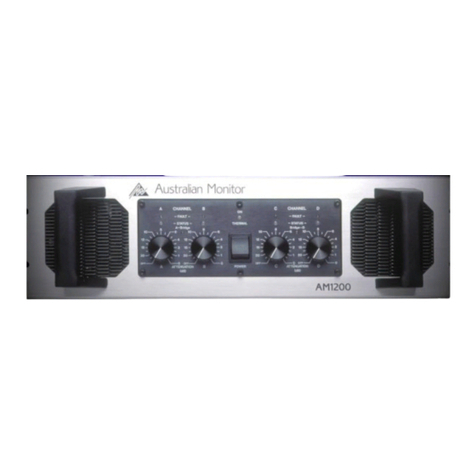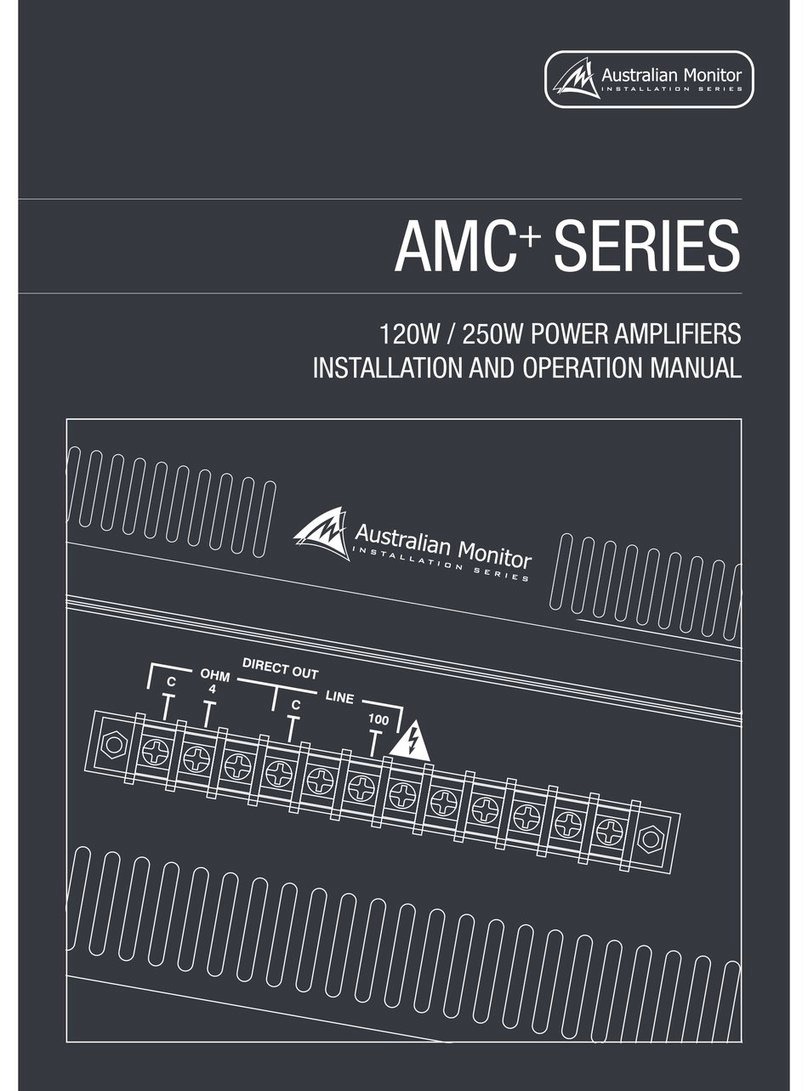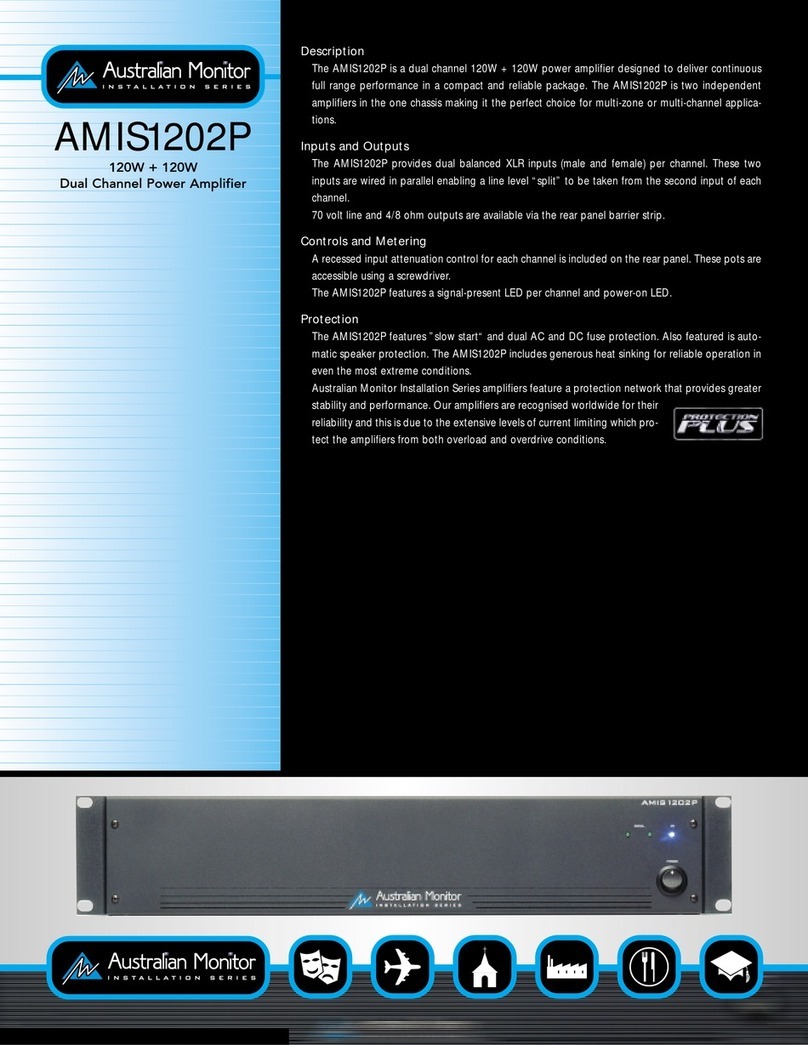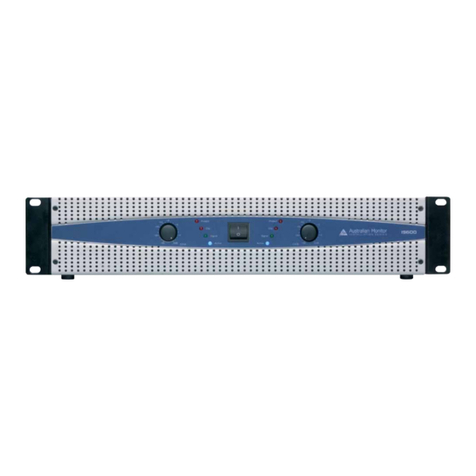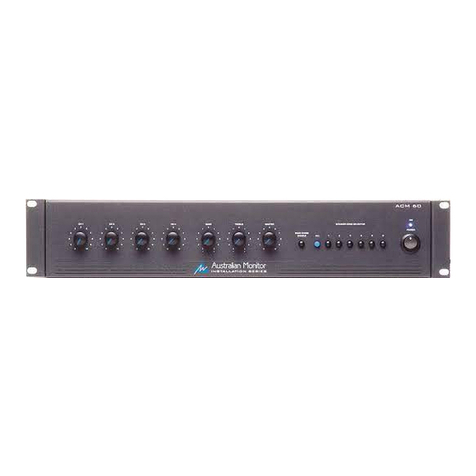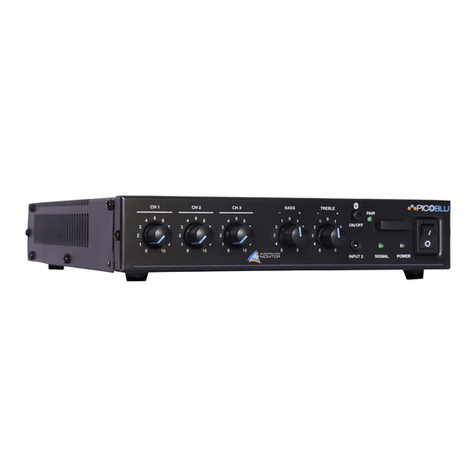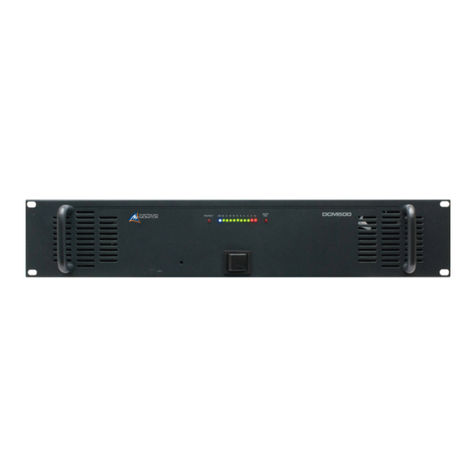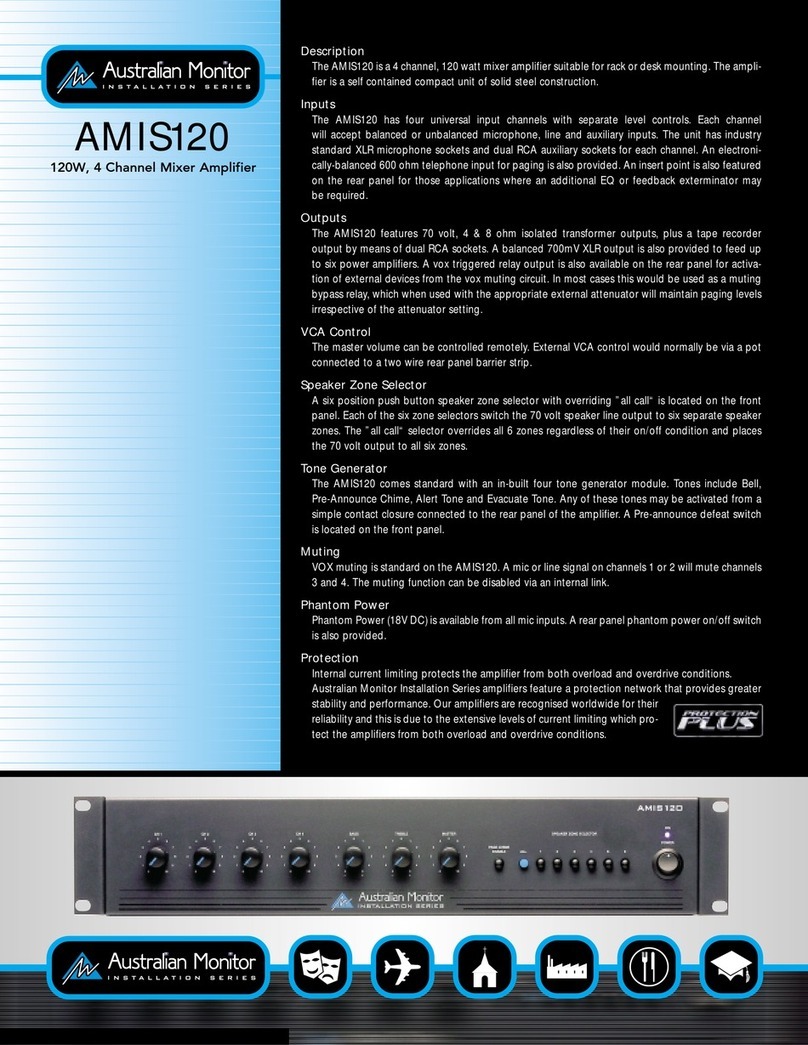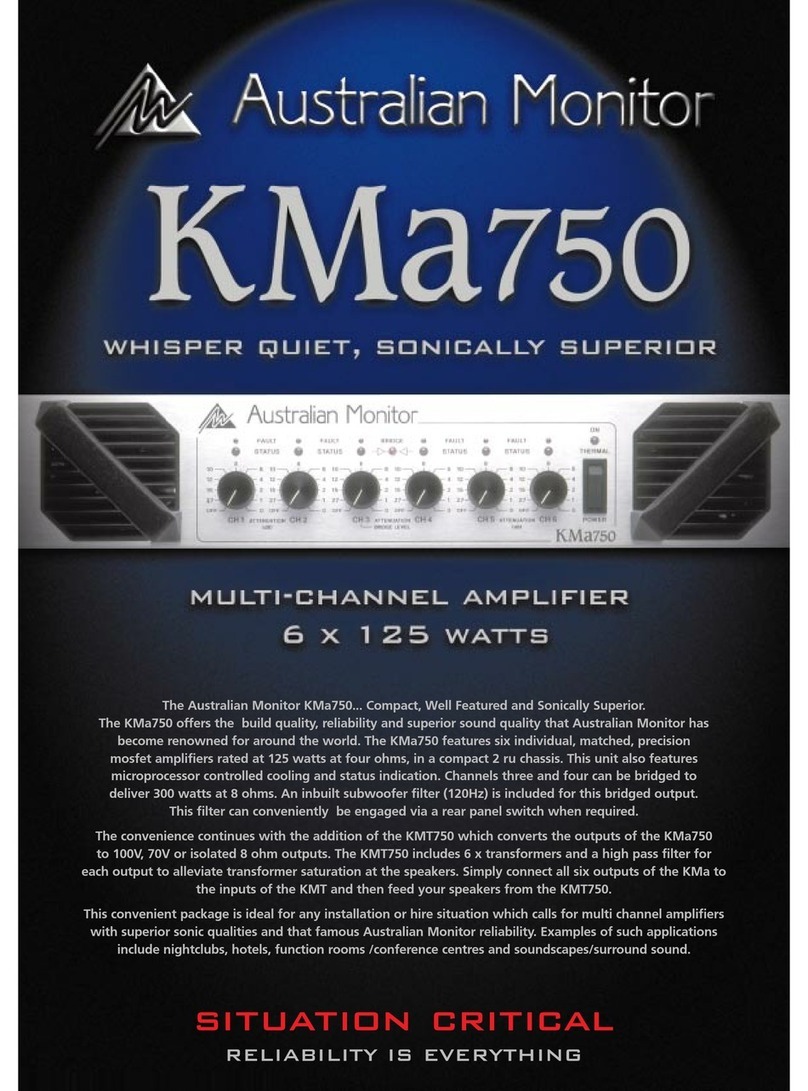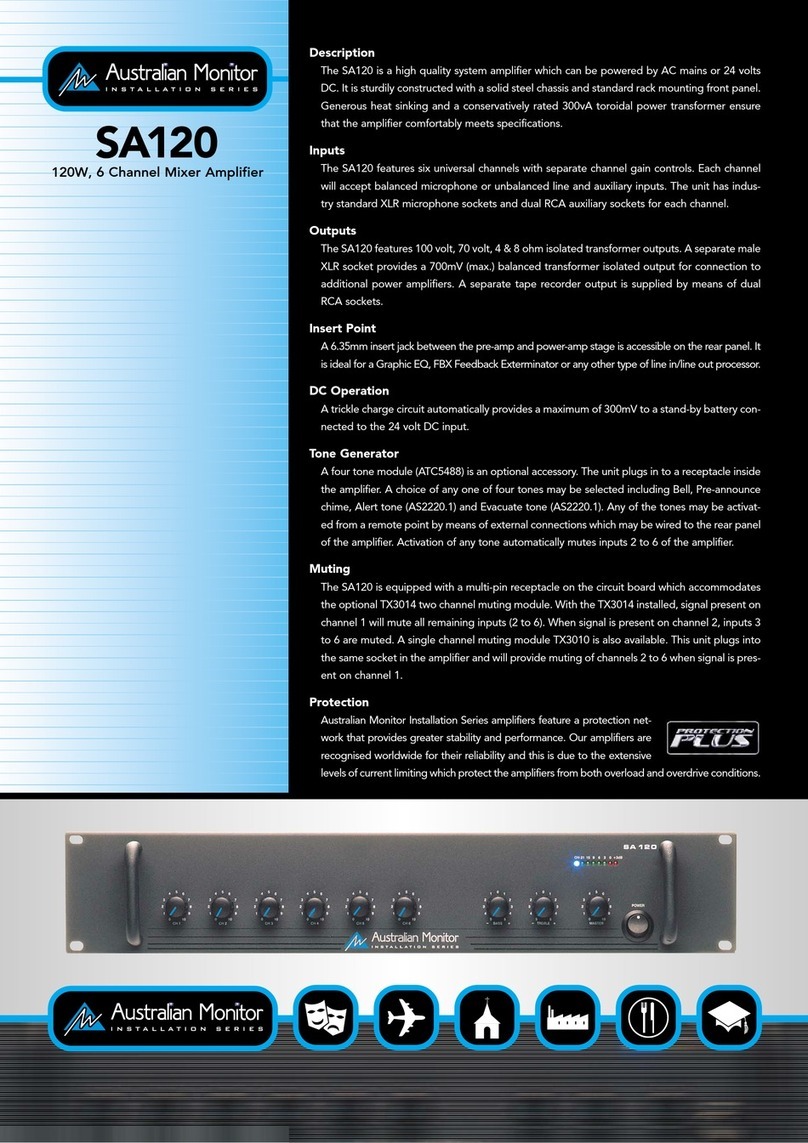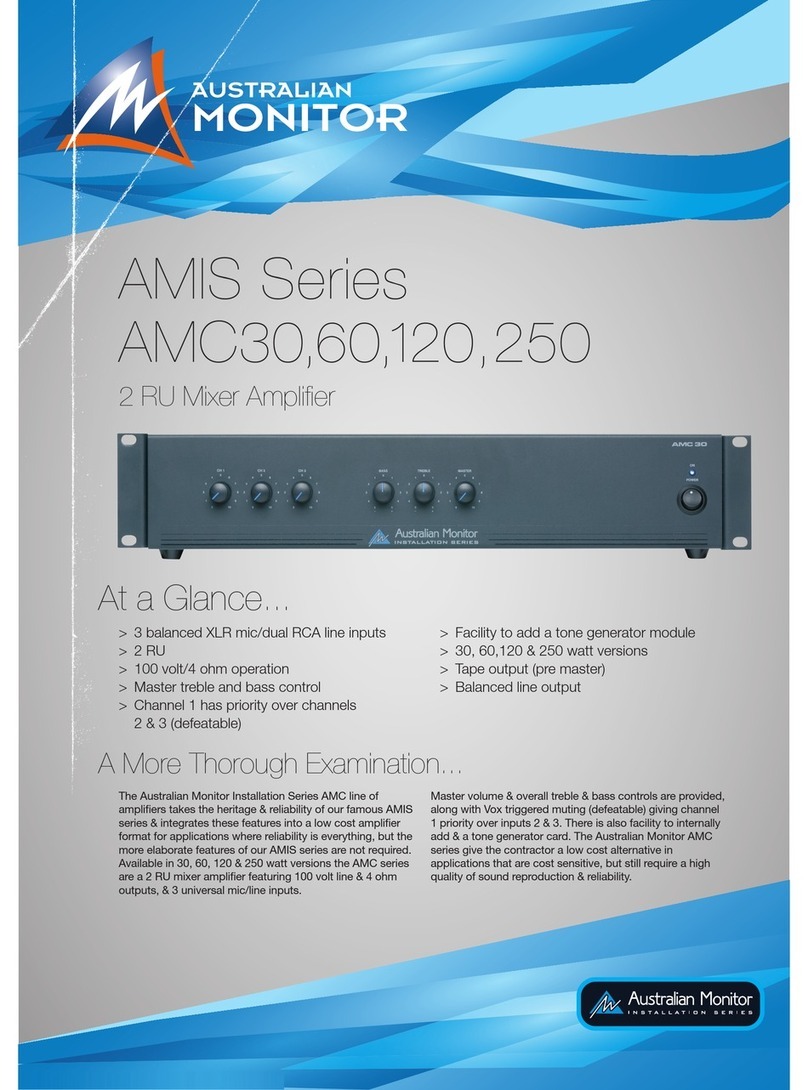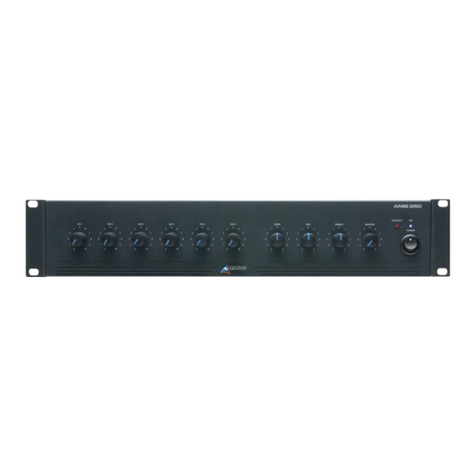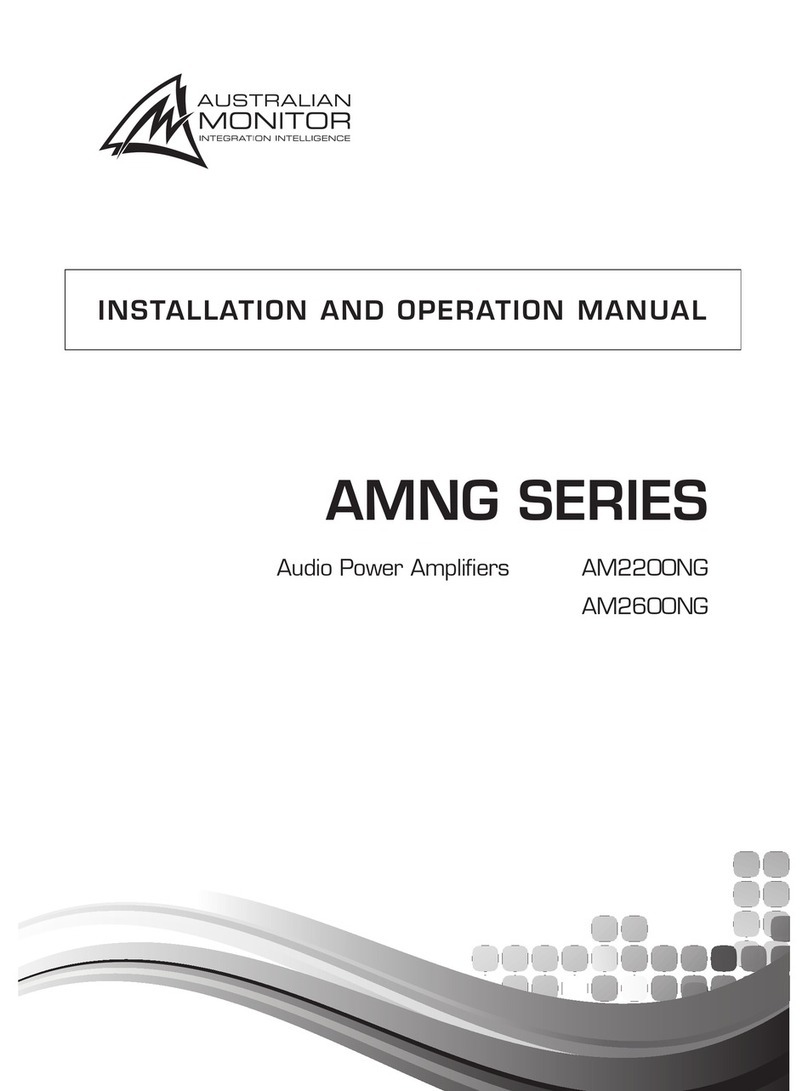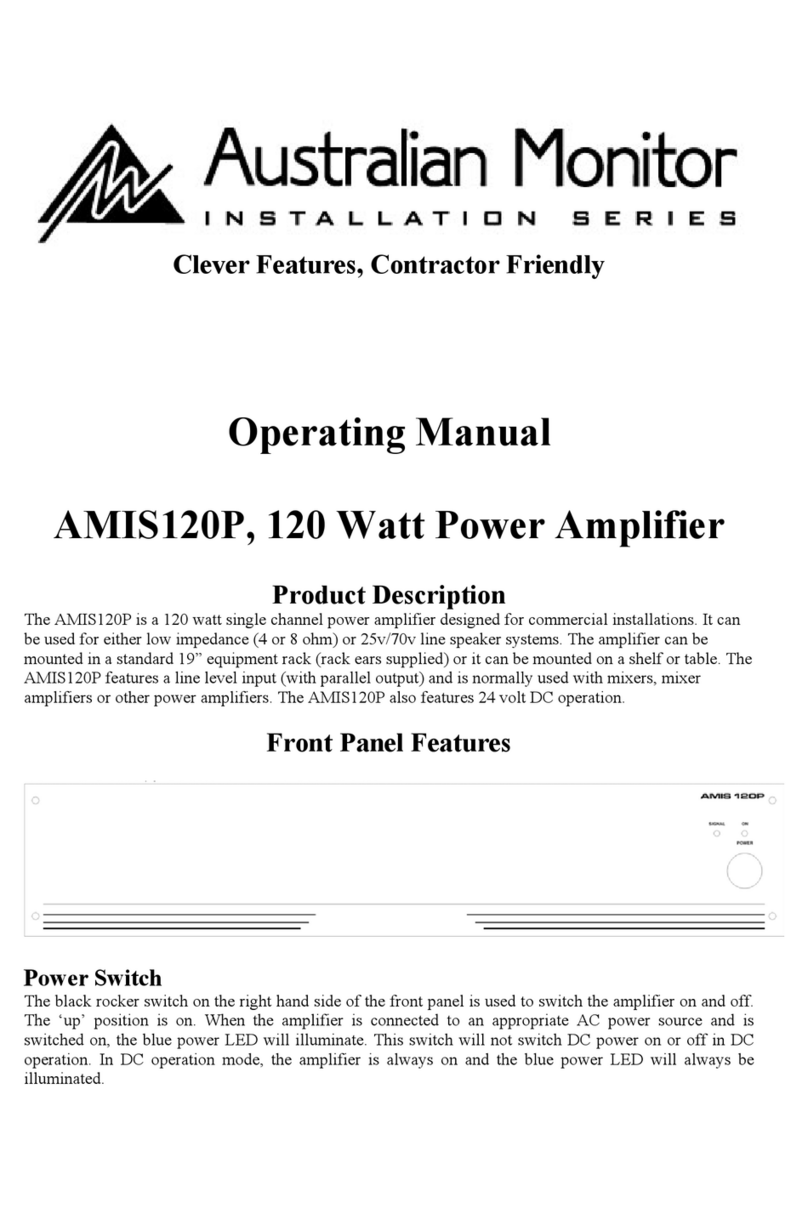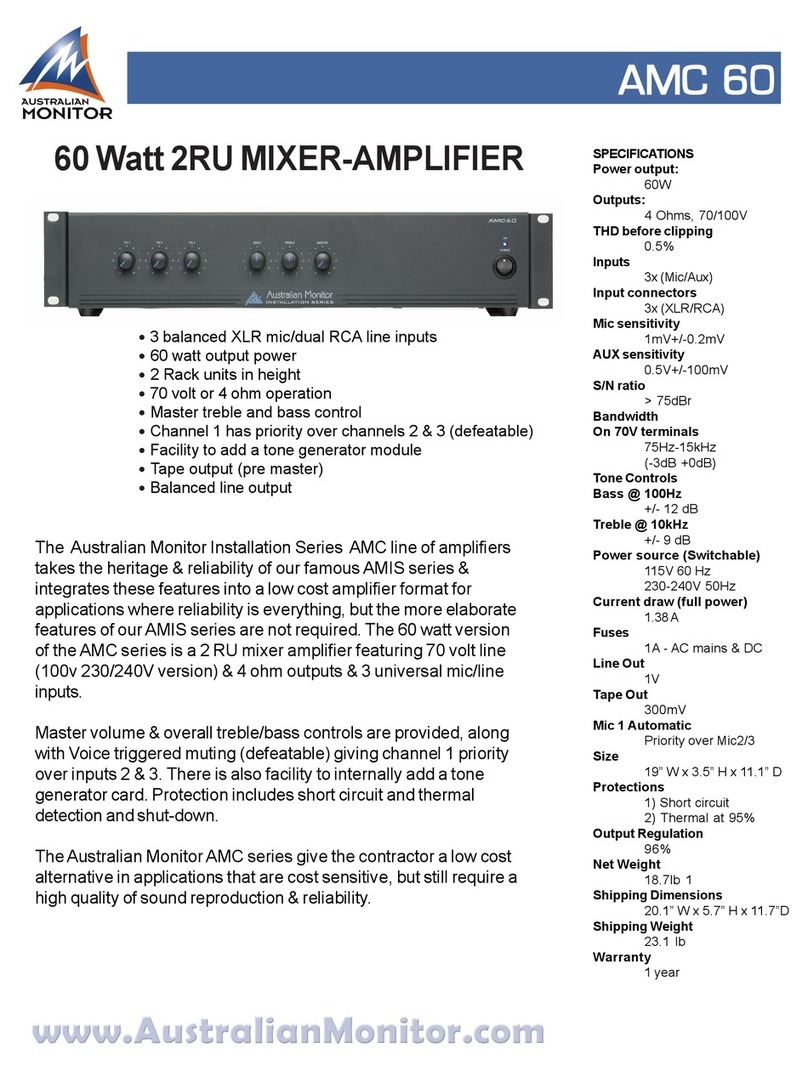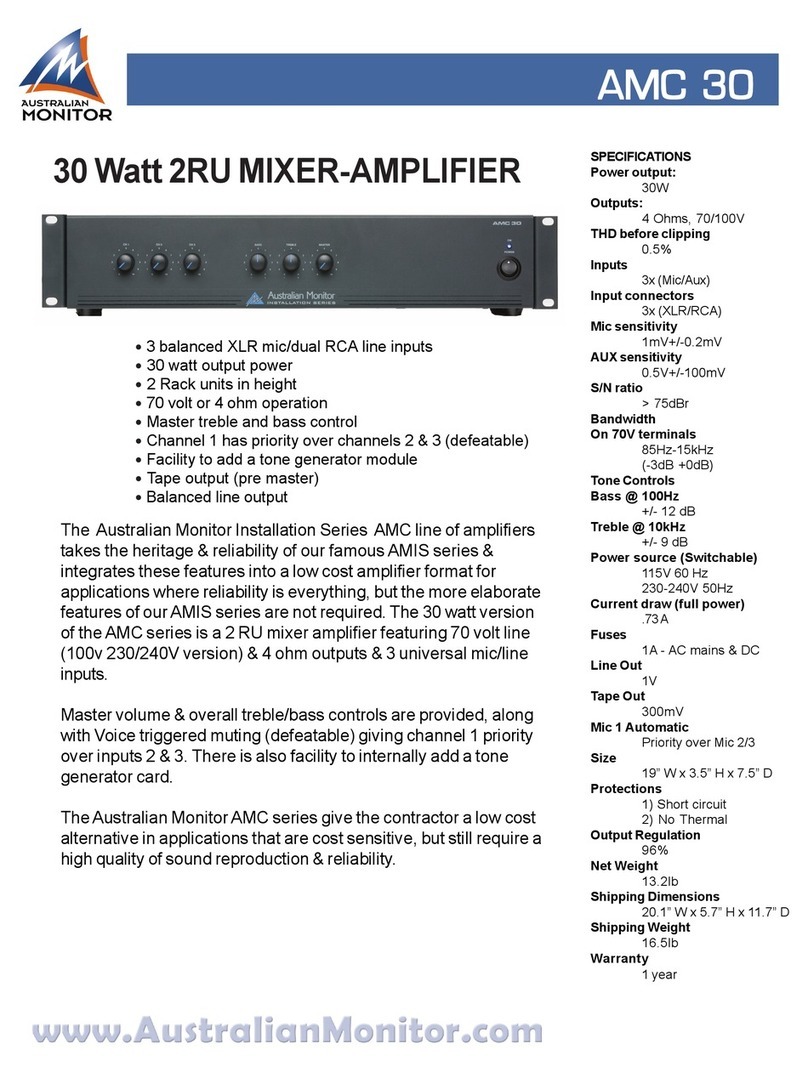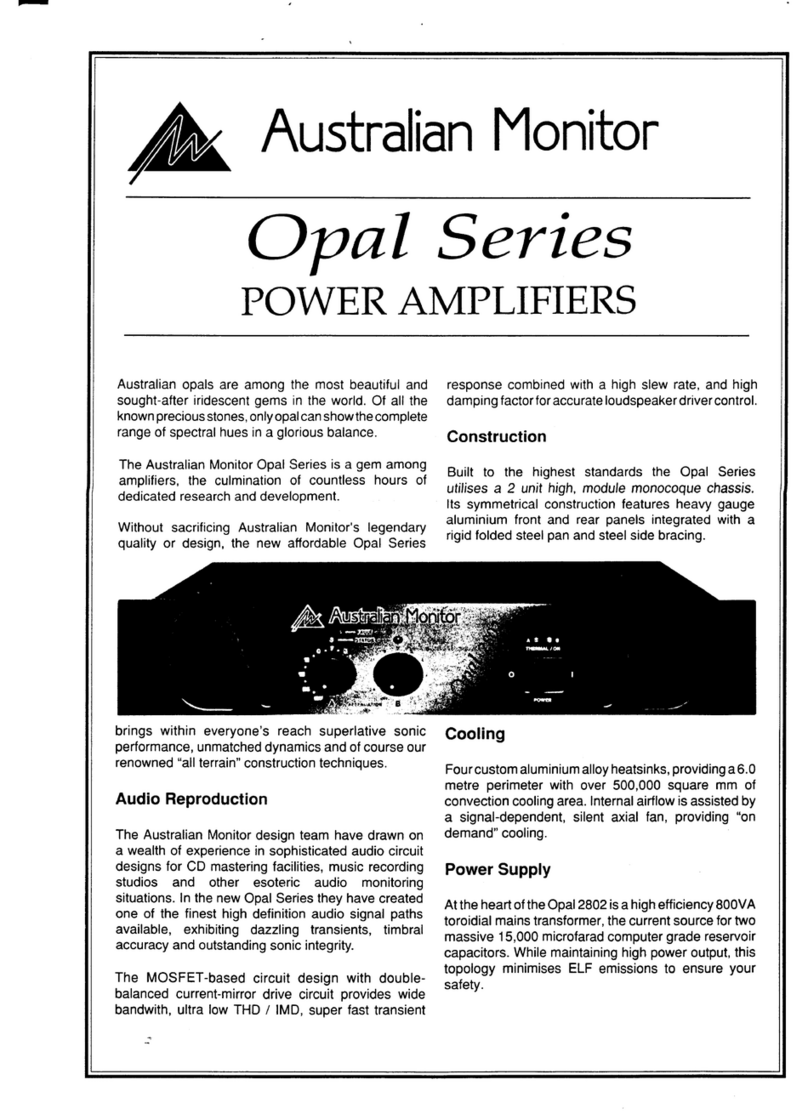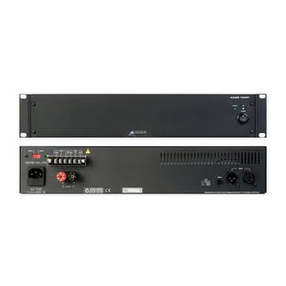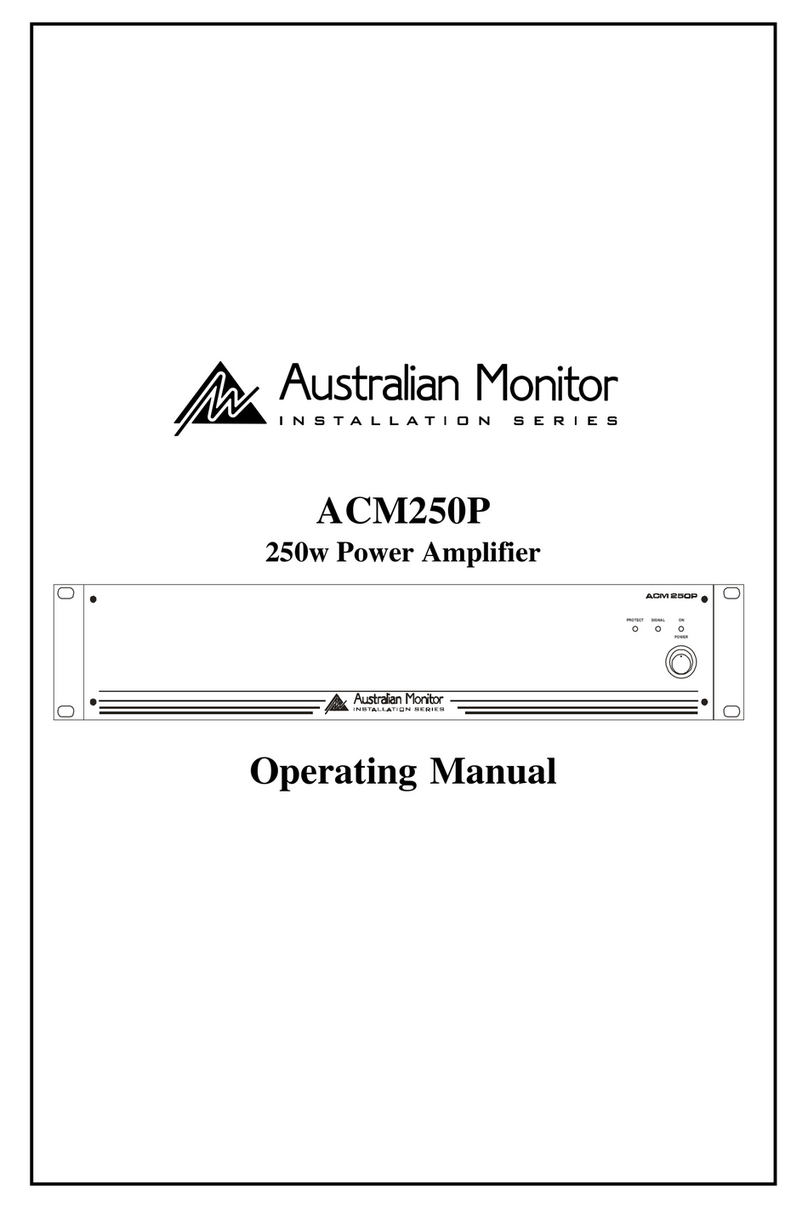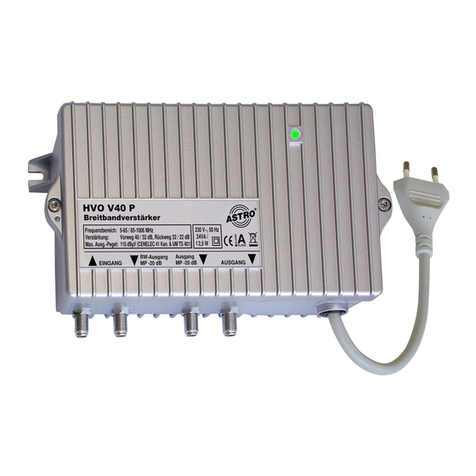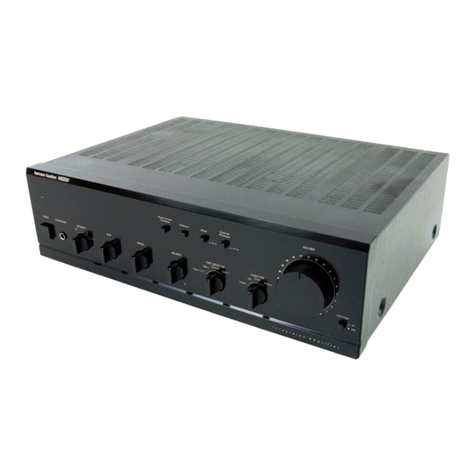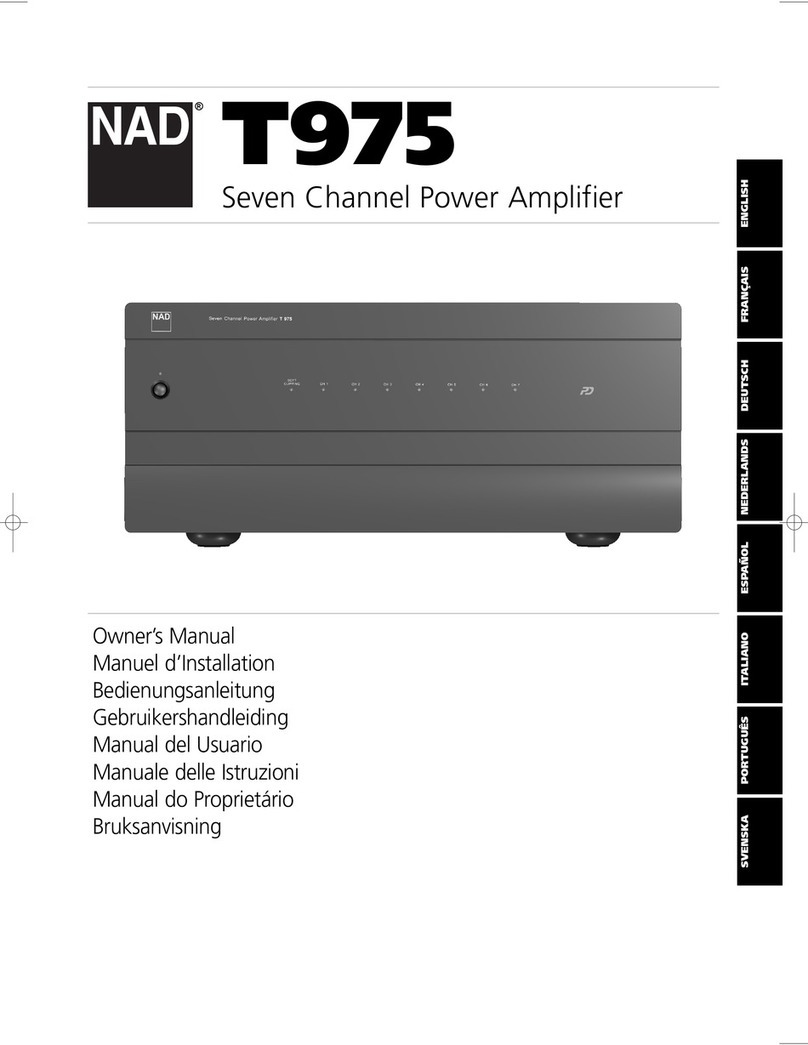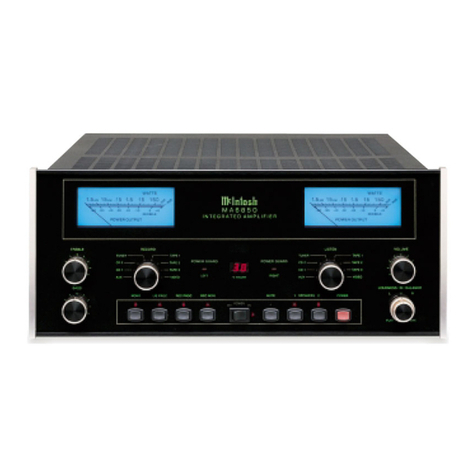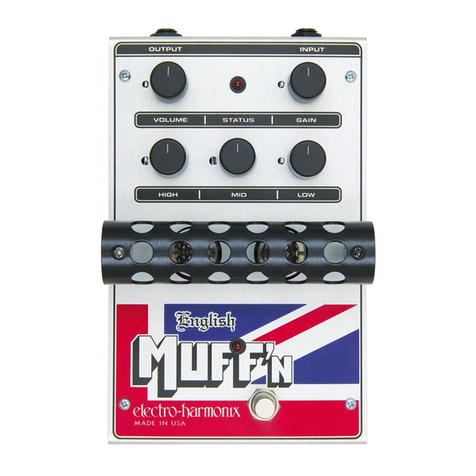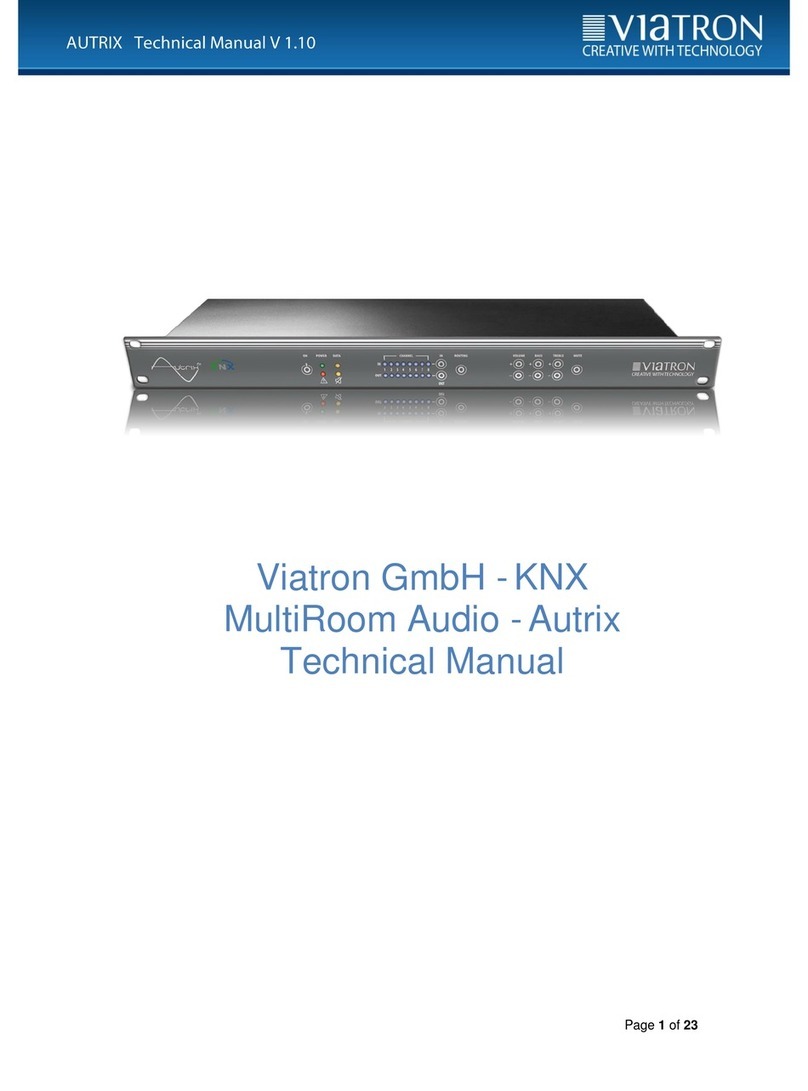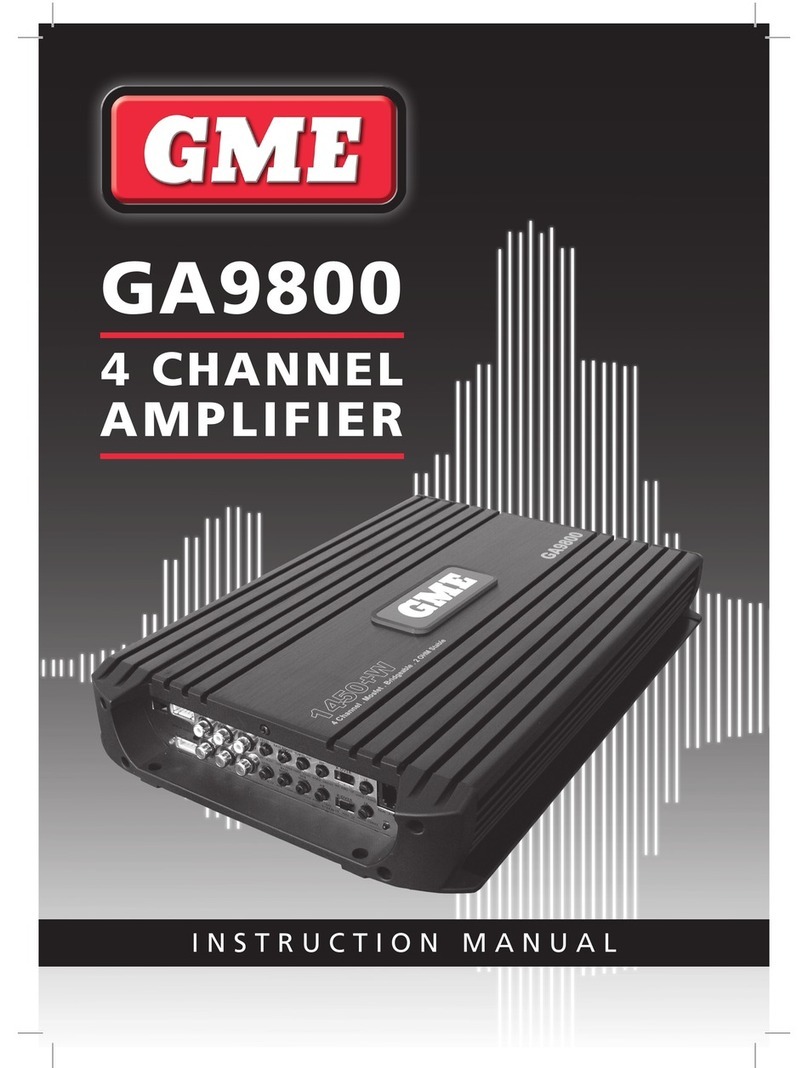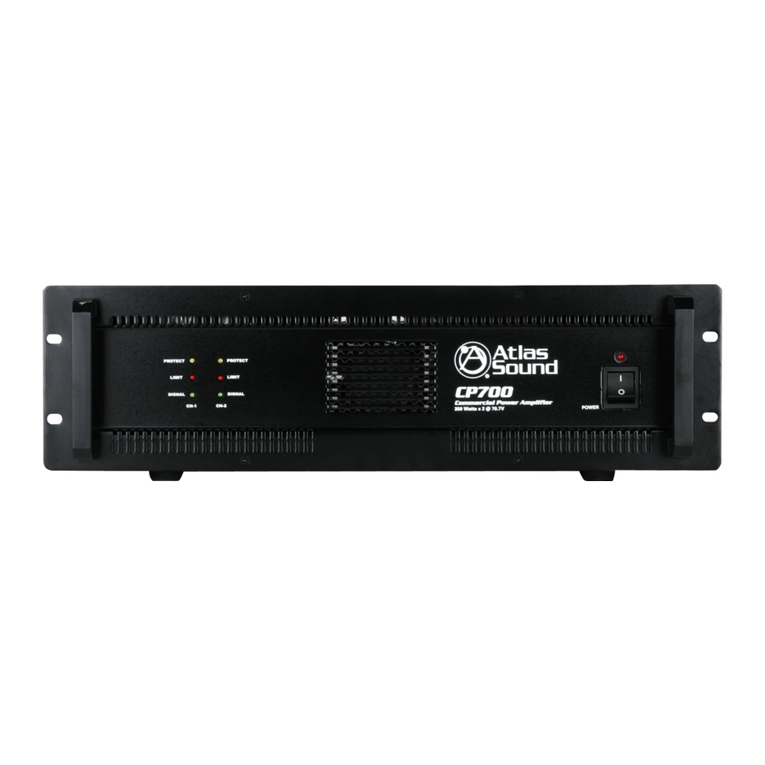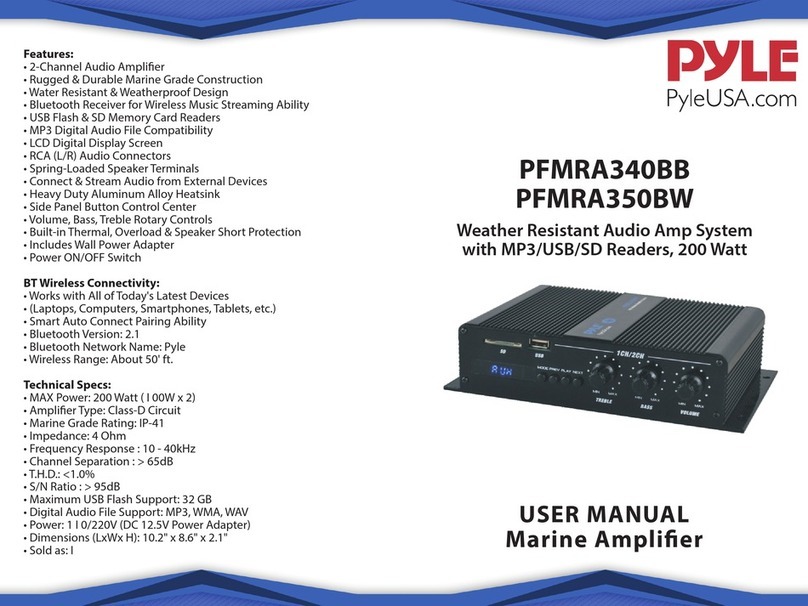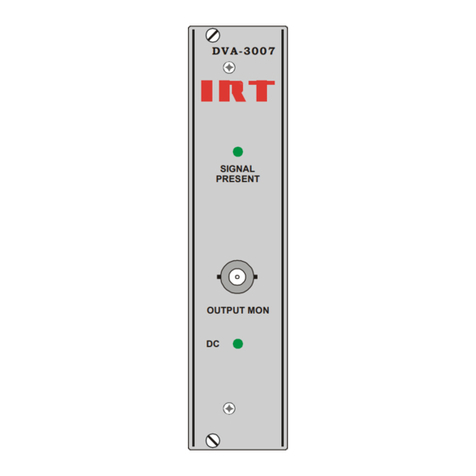AMIS480P INSTALLATION & OPERATION MANUAL PAGE 5
BACK PANEL
IEC MAINS INPUT SOCKET
This is a standard IEC 3 pin socket.
It accepts a standard IEC mains cable,
provided. The fuse draw contains the
mains fuse and a spare.
The mains fuse is:
• 230V/240V model -
Time lag (slow 6.3A blow) HRC
20mm x 5mm ceramic type.
• 115V model -
Time lag (slow 10A blow) HRC
20mm x 5mm ceramic type.
Always replace the fuse with
one of the same value and type.
NOTE: Always disconnect power
to the amplifier before replacing
fuses.
VOLTAGE SELECT SWITCH
(only on 230V/240V models)
This switch is used to select the mains
voltage for your region.
Disconnect power to the amplifier
before operating this switch.
24VDC
These binding posts provide connection
for an external 24V emergency power
systems and are not switched by the
front panel power switch. The 24VDC IN
does NOT provide any trickle charge
facility.The binding posts can accommo-
date a wire thickness of up to 4mm in
diameter. The maximum current draw at
24VDC is 18A with peaks up to 25A.
INPUT
These 3 pin XLR sockets accept the
source input for each channel. When
wiring from unbalanced sources, pins
1 and 3 should be shorted together
(see Installation section). The input
sensitivity (voltage required to drive
amplifier to maximum power) of the
amplifier is 0dBu (0.775V) with the
Input Level Control set at maximum.
LEVEL
These pots control the level of the signal
through the amplifier channel. Minimum
position is Off and maximum gives a
sensitivity of 0.775V (0dBu). The maximum
input voltage before the input stage clips
is 2.9V (+11.5dBu).
Depending on the input
source, the input level
control should be run above
the 12 o’clock position (half
way) to avoid clipping the input stage.
LINK SWITCH
These switches change the input source
of an amplifier channel from the XLR input
connector to the linked channel. The
switch is positioned before the amplifier
channel volume control, so only the
individual channel is affected by volume
control changes. See Installation - Setup.
NOTE: Please ensure the link
switches are in the desired
position before power-up.
GND LIFT
These DIP switches are used to individu-
ally lift pin1 of each input. Reading from
left to right, these switches affect
channels 4, 3, 2, 1. The ground is not
completely removed but stays tied to
ground through a 10Ωresistor. This is to
avoid speaker and amplifier damage if an
incorrectly wired (pin 3 floating) unbal-
anced signal is connected and the ground
is inadvertently lifted.
OUTPUT
There is one 6 pole terminal strip for each
channel. Each channel has a low impedance
output and a distributed line voltage output.
70V out is available on 115V models.
100V out is available on 230V/240V models.
MINIMUM IMPEDANCE
Distributed Line Output
70V (115V version) 62.5Ω
100V (230/240V version) 125Ω
Low Impedance Output
(both versions) 4Ω
NOTE: Only connect one output -
either Distributed Line or Low
Impedance per channel. Do not
connect LowZ and 100V at the
same time.
Each channel output strip comes fitted
with a touch-proof cover held in place by
two M3 machine screws with flat and
spring washers.
EXHAUST VENTS
These vents allow hot air to escape from
the amplifier. There are also vents along
the side of the amplifier. These should be
kept free from obstruction.
☛
☛
1
2
3
3 45 67 91
4
5
6
7
8
9
28
